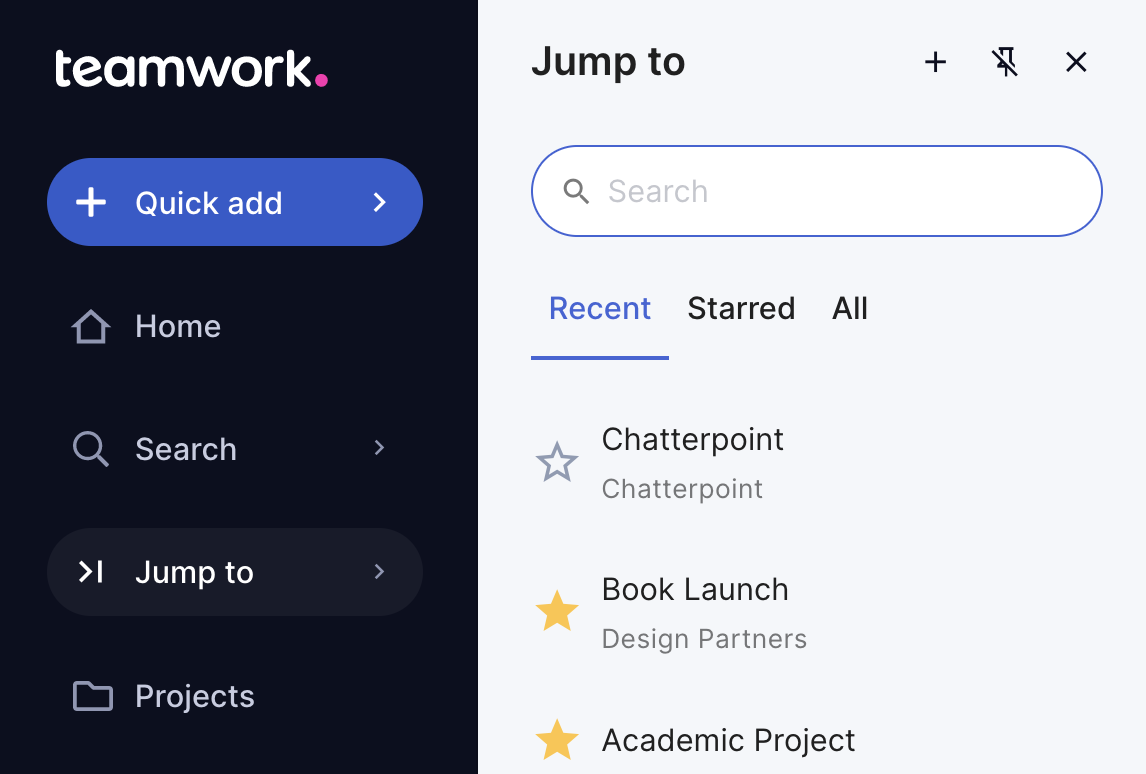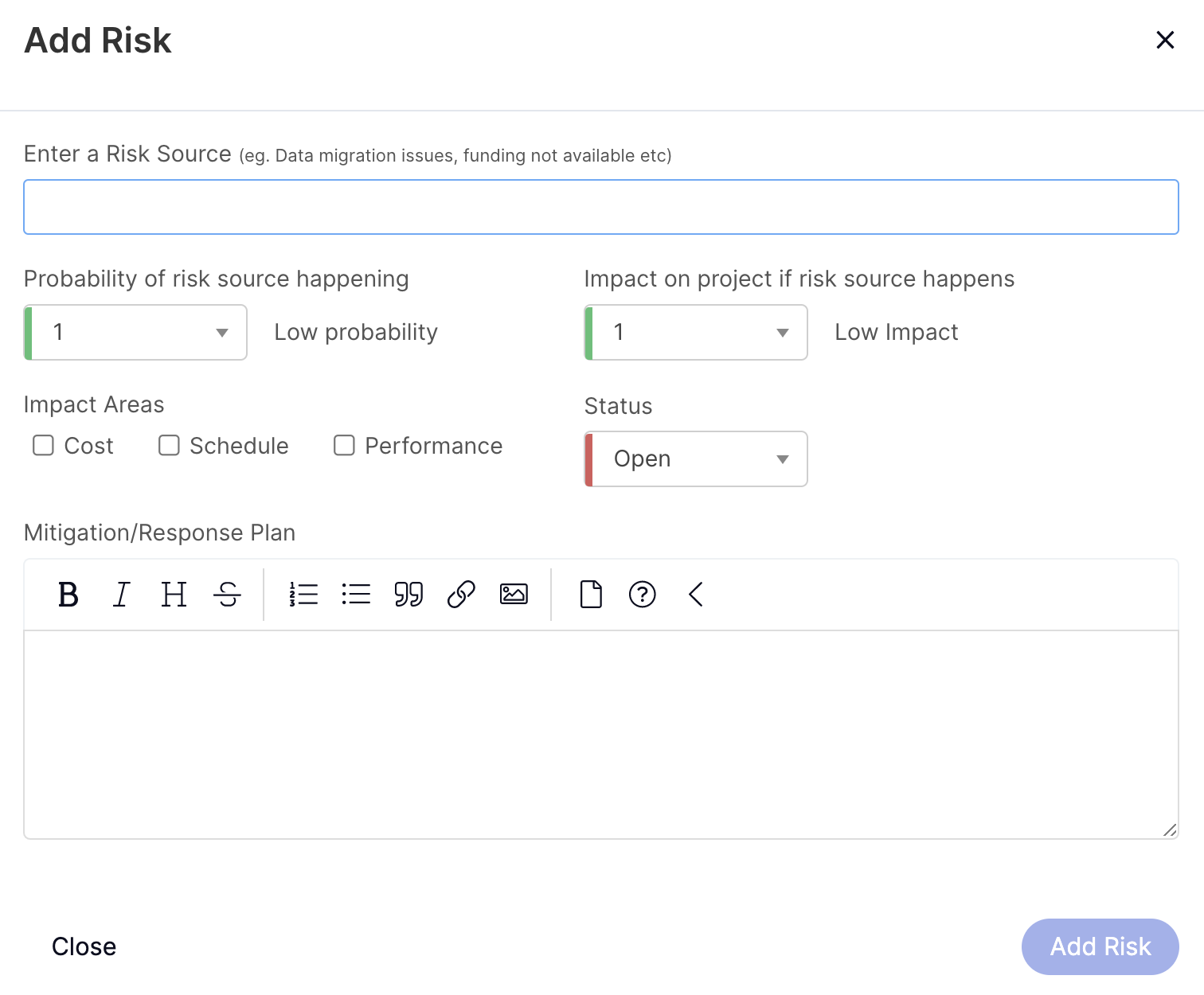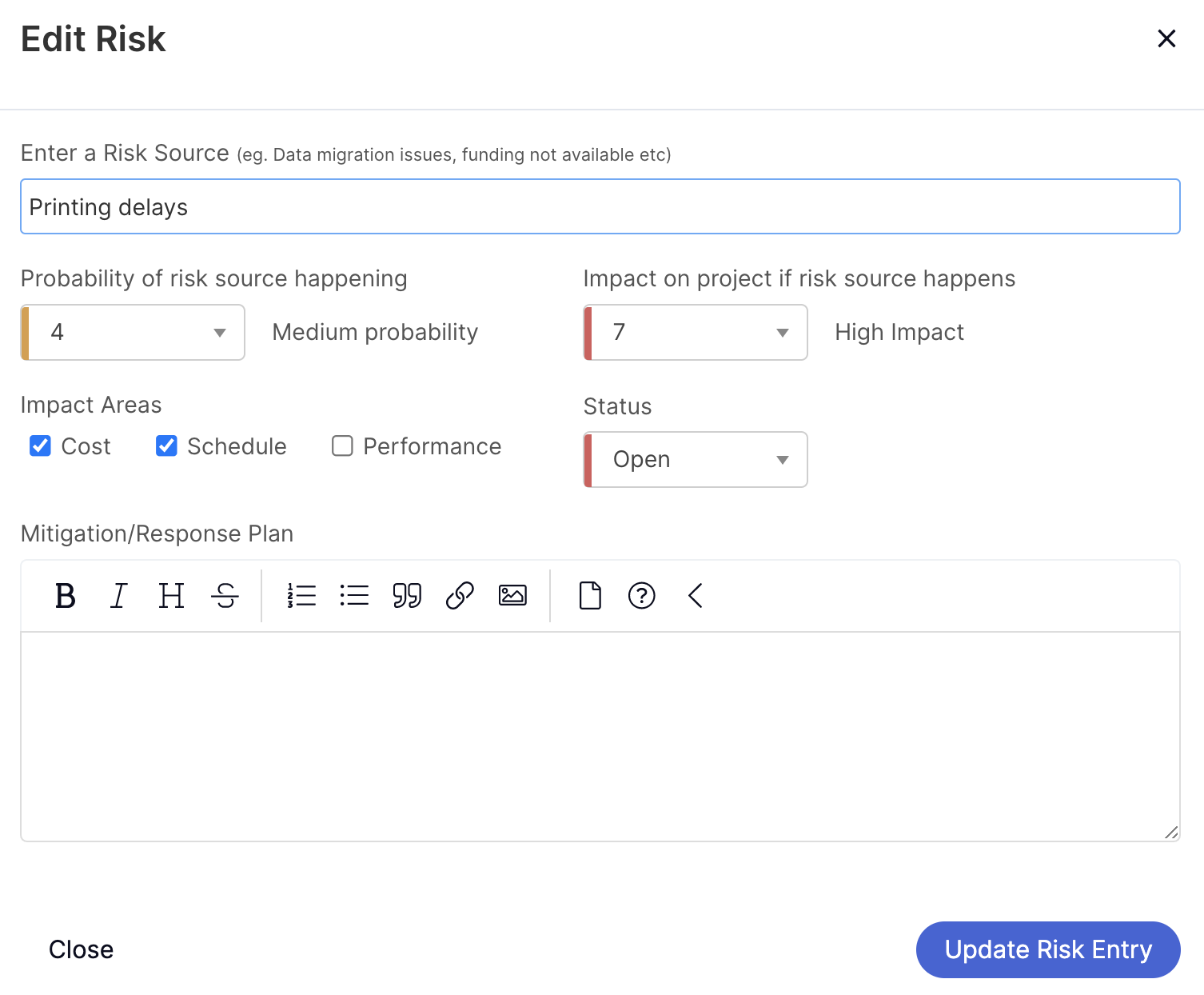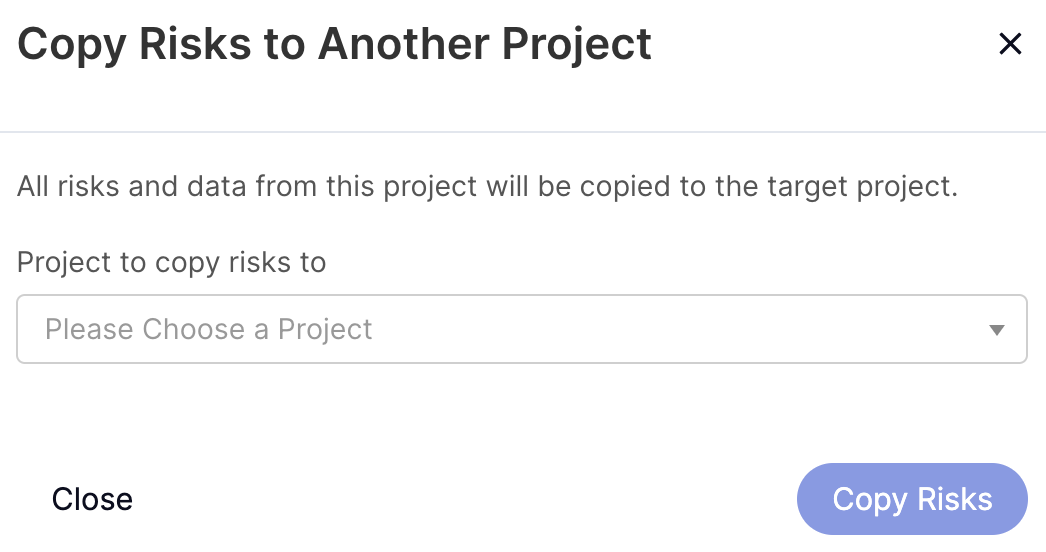✔ Available
on Deliver, Grow, and Scale
subscriptions 1
| What | Create risks to
account for
anything which
may affect the project's
outcome. |
| Why |
|
| Who |
|
| When | You want to track project
risk factors and document
appropriate mitigation
responses should one of them
occur. |
| What | Create risks to
account for
anything which
may affect the project's
outcome. |
| Why |
|
| Who |
|
| When | You want to track project
risk factors and document
appropriate mitigation
responses should one of them
occur. |
Create a
risk
Create risks from
the Risks section
of
a project.
- Click Jump to in Teamwork's main navigation menu.
- Search for and select a project.

- Switch to the Risks view from the project's navigation bar. The Risks tab might be hidden under the More... option.
- Click Add Risk.
- Fill out the required fields:
- Risk Source: Set a source (aka name) for the risk.
- Impact Areas: Choose at least one impact area (cost, schedule, or performance) using the checkboxes.

- Populate additional risk details.
Probability Probability of the risk source happening:- Low (1
-
3)
- Medium
(4 -
6)
- High
(7 -
9)
Impact Impact on the project if the risk source happens:- Low (1
-
3)
- Medium
(4 -
6)
- High
(7 -
9)
Status The risk's current status:- Open
- Pending
- Closed
Mitigation Plan Detailed response plan in the event the risk occurs. Probability Probability of the risk source happening:- Low (1
-
3)
- Medium
(4 -
6)
- High
(7 -
9)
Impact Impact on the project if the risk source happens:- Low (1
-
3)
- Medium
(4 -
6)
- High
(7 -
9)
Status The risk's current status:- Open
- Pending
- Closed
Mitigation Plan Details of your response plan in the event the risk occurs. - Low (1
-
3)
- Click Create
Risk.
The risk is added to the
project's risk register.
Another
option...
Risks can also be
created from the
site-level Everything area.
You'll need to specify a
project
to associate with the
risk.
View risks
View all risks added to a project
via the project's Risks area.
- Click Jump
to in Teamwork's
main navigation menu.
- Search for and
select a
project.
- Switch to the Risks view
from the project's navigation
menu The Risks tab
might be hidden under the More... option.

Another
option...
Want to view risks across
multiple projects at once?
- Click ...More in
Teamwork's main navigation menu.
- Go to the Everything section, then select the Risks tab.
Filter risks
Whether you're viewing risks in an
individual project or in the Everything
section, you can use filters to refine the
risks shown.
- Go to a Project > Risks or Everything > Risks.
- Select the filters button (
 )
in the
view's top right.
)
in the
view's top right. - Click a filter option ( detailed in the table below) and apply the filter criteria you need to refine the data. The view updates automatically as you select each filter criteria.💡 Apply multiple filter options in parallel for a highly tailored report.
Filter Purpose Keyword Display risks matching a specific keyword search term. Probability Show risks with a specific probability level. Status Show risks based on their status.Impact Show risks with a specific impact level.Impact areas Show risks based on their associated impact area.Projects Show risks associated with certain projects.📝 This option is only available in Everything > Risks.Filter Purpose Keyword Display risks matching a specific keyword search term. Probability Show risks with a specific probability level. Status Show risks based on their status.Impact Show risks with a specific impact level.Impact areas Show risks based on their associated impact area.Projects Show risks associated with certain projects.📝 This option is only available in Everything > Risks. - Next:
- Clear: Click Clear filter to reset the view. The filter remains active unless you clear it.
- Save: Create saved filters for quick access to custom views of risks data you need.
- Export: Export your filtered view in one of the supported formats for easy sharing with key stakeholders.
Update a
risk
Update risks from their
associated project's Risks section or from the
site-level Everything > Risks area.
- Click Jump
to in Teamwork's
main navigation
menu.
- Alternatively,
click Everything and
select Risks. You
can
then jump to step 4.
- Search for and
select a
project.
- Switch to the Risks view
from the project's navigation
menu. The Risks tab
might be hidden under the More... option.
- Click the edit pencil on the risk's right.

- Update the risk's details (source,
impact, impact areas, probability, and
mitigation plan).
- Click Update Risk Entry to save your changes.

Copy risks
Copy all risks from one project to
another.
- Click Jump
to in Teamwork's
main navigation menu.
- Search for and
select a
project.
- Switch to the Risks view
from the project's navigation
menu. The Risks tab
might be hidden under the More... option.
- Click the ... (ellipsis) in the view's top right.
- Select Copy Risks.

- Choose a destination project for the
copied risks.
- Click Copy Risks.

- Click OK to confirm.
Export risks
Export all risks from an individual
project or multiple projects at
once.
- Click Jump
to in Teamwork's
main navigation
menu. Alternatively,
click Everything and
select Risks (you can
then jump to step 4).
- Search for and
select a
project.
- Switch to the Risks view
from the project's navigation
menu. The Risks tab
might be hidden under the More... option.
- Click the ... (ellipsis)
in the view's top right.
- Hover over Export.

- Select an export format:
- PDF
- Excel
Delete a risk
No longer require a risk? Delete it and
remove it from
your project.
- Click Jump
to in Teamwork's
main navigation
menu.
- Alternatively,
click Everything and
select Risks. You
can
then jump to step 4.
- Search for and
select a
project.
- Switch to the Risks view
from the project's navigation
menu. The Risks tab
might be hidden under the More... option.
- Click the trash can on the risk's right.

- Click OK to confirm the deletion.
Best
practices
- Customized report data: Use filters
to drill down to the exact data sources
you need to report on. Focus your
attention on high probability, high impact
risks.
- Efficiency: Create saved filters
for quick access to custom views of report
data you need on a regular basis.
1. Also available on legacy subscriptions: Pro, Premium, Enterprise.
